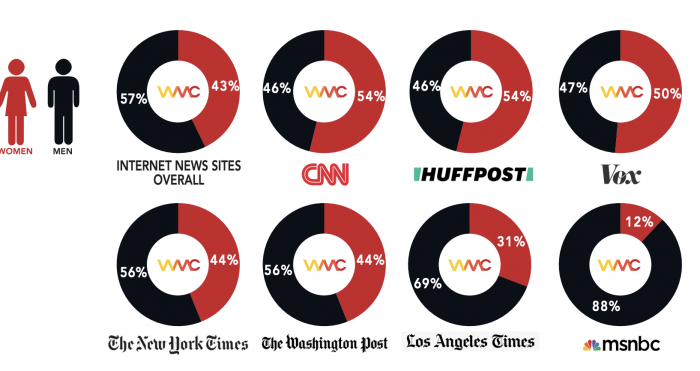
Men still dominate the news media, accounting for about two-thirds of all media credits and bylines, according to a new report from the Women’s Media Center.
Called “Divided 2021: The Media Gender Gap,” the report relied on more than 62,000 pieces of content that the report’s authors analyzed from January 1 through March 31, 2021 for 30 news outlets across print, online, broadcast, cable TV, and wire outlets in the United States.
Of these outlets, broadcast news was the most equitable, as men and women tended to report equally on primetime weekday evening news broadcasts on the seven major broadcast and cable networks included in the study.

None of the 14 print newspapers examined as part of the report achieved parity, according to the report. The narrowest gender gaps were at The New York Times, The Washington Post, and USA Today, while The Atlanta Journal-Constitution, Newsday, and the Los Angeles Times had the widest gaps.

The findings were similar at online news outlets (the study looked at seven online news sites) and at wire services (AP and Reuters were included in the report): Men tended to report more than women, and overwhelmingly so at the wire outlets. The exceptions to this trend were CNN.com, HuffPost, and Vox.
There were also differences in the topics that women tended to cover compared to their male colleagues. From the report:
Overall, men report most obituary and sports stories, weather, legal, opinions and editorials, business and economy, international news and politics, science and the environment, and election news. Women are as likely as men to report on lifestyle and leisure, religion, and social justice

Within the specific media types, print and wire outlets were least likely to achieve gender parity when it came to subjects covered. Women working at wire services only had slim majorities for coverage of science and environment stories, and opinions and editorials. Among print outlets, women didn’t hold a definitive majority among any of the subjects that were examined.

See the full report here.